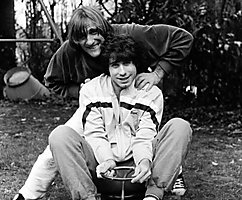The fatal flaw of the USSR
 Bashny.Net
Bashny.Net
Almost sixty years ago - December 31, 1951 - it was finalized and the first Soviet computer. What happened then? Today, we no longer know the story ...
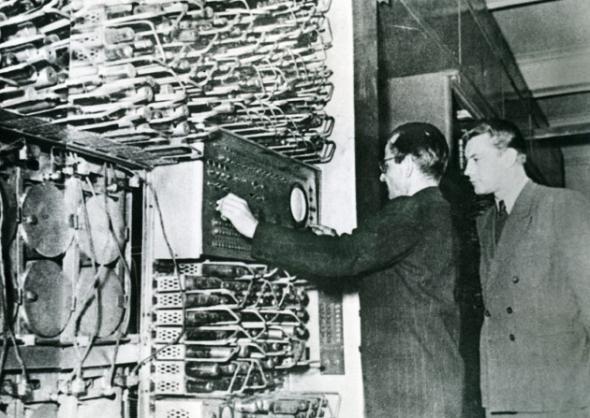
... The development of computer technology in the United States than in the former USSR. About domestic computer school in our time prefer to remain silent. Let's try to open up some of the facts that led to this.
Although nowadays computing operations is not the main, and in any case not only the scope of the computer, historically it owes its origin was the need of computing.
The first computing devices were different instruments, the most typical representative is an adding machine with the decimal system. The immediate predecessors computers were machines binary calculation made on the electromagnetic relay. Soon they were replaced by devices operating in the vacuum tubes, which meant the birth of the first generation of computers.

Appearance of the first computing device coincides with the phenomenal discoveries of scientists in the fields of energy, nuclear physics, rocketry, electronics. Research in these areas require extremely accurate, rapid and complex computations. Another reason for speeding up work in the field of information technologies - the ongoing process of post-war confrontation between the USSR and the USA. The first computers appeared in both countries almost simultaneously.
The official beginning of the era of computer technology is considered to be 1946, when the US military declassified legendary electronic computer called ENIAC. This is the first full-scale mainframe was built at the University of Pennsylvania. "Godfather" it was American physicists John Mouchli and John Eckert. First he developed the architecture of the computer, and the second transformation of ideas into reality. The works were started in 1942 and the spring of 1945 a computer was built.

The founders of the Soviet computer technology was Sergei Lebedev, and Isaac Brook. These scientists, working in the energy field, would somehow automate the tedious computational process. As a result, each of them suggested independent direction of computing. In 1939, Brooke created in the laboratory of the Energy Institute of the USSR mechanical integrator for solving differential equations, and Lebedev created in 1945 electronic analog computer designed to solve these same problems.
It should be noted that in 1948 the Soviet Union formed three schools of the development of computer technology:
Sergei Lebedev, who became an ideologue of computers with high speed;
Isaac Brook, engaged in the development of small and control computers;
Boris Rameeva that before the end of the 60s led the direction associated with the development of the mainframe.
The beginning of the history of Soviet computer technology is considered to be 1948. It was in this year under the leadership of Brook and his colleagues drafted Rameeva automatic digital computer with a hard program management. However, this project was not implemented. In the same year, Lebedev started at the Institute of Electrical Engineering of the USSR Academy of Sciences of the work on the creation of small electronic counting machine, which was successfully completed in two years.
In 1949 Rameev drafted a new computer "Strela" and was involved in its creation as a deputy chief designer Basilewski. "Arrow" was the first Soviet serial computers. After her Rameev as chief designer began to work actively on computer "Ural-1". Today, to see with their own eyes the first Soviet computers can be in the Polytechnic Museum in Moscow. Interesting exhibits are stored at the Institute of Cybernetics, Academy of Sciences of Ukraine named after VM Glushkov Kiev.
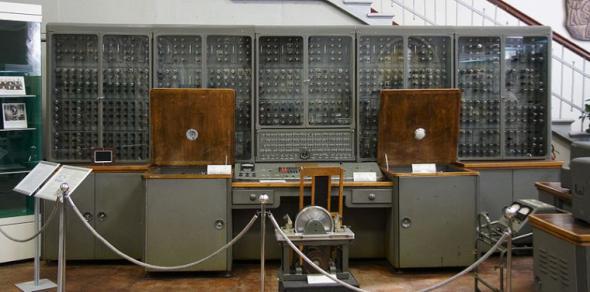
By the mid 60s the creation of a computer, in addition to the main scientific schools in Moscow and Penza, engaged in Minsk (series cars performance "Minsk") and Yerevan (mini-computers and the computers of average performance "Nairi" and "Hrazdan»).
Institute of Cybernetics, Academy of Sciences of Ukraine, headed by VM Glushkov, conducted theoretical studies in the field of computer design and embodied in the theory of real machines - small computer "Dnepr", minicomputers for engineering application "Promin" and "Peace".
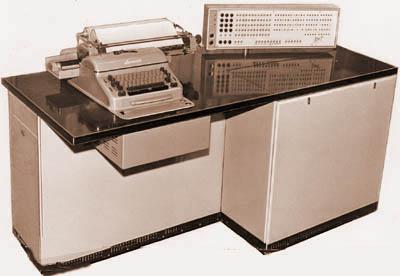
Then it seemed that no special obstacles to the rapid development of the national school of computer and computing. But then came the fateful December 1967, when at the government level, it was decided to develop a single series of computers (UCS). But two years later, in the margins of the higher authorities have seen fit to develop the industry, relying on computer architecture and software-compatible family of IBM 360.
Academics Glushkov and Lebedev were against copying systems IBM, pointing out that in this case will be played appliances almost a decade ago will stall and own scientific development. But their voices were not heard, forever buried dream of scientists and enthusiasts to develop their own computer industry. As a result, data centers rather quickly were filled family computers UCS, ASVT, SM computers.
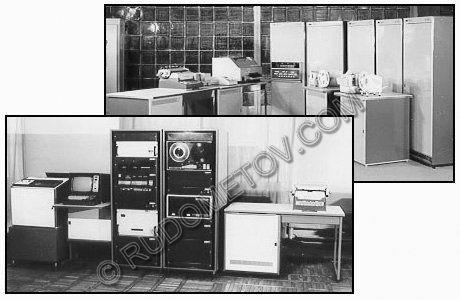
Victims of worship IBM has not been justified that confirmed the story. Thus, during the second half of the 80s in Minsk began production of the personal computer of the EU (EU-1840, the EU-45 and 55) on processors like Intel. However, again, the technology of production of microprocessors are not allowed to go beyond the level of Intel 286.
By 1990, the operation was about 15 thousand cars UCS. After the cessation of production of natural extinction began domestic computer park. Scattered service system stopped factories ...
Such are the sad little facts emerge when we turn to the history of the domestic personal computer.
author Igor Korneev
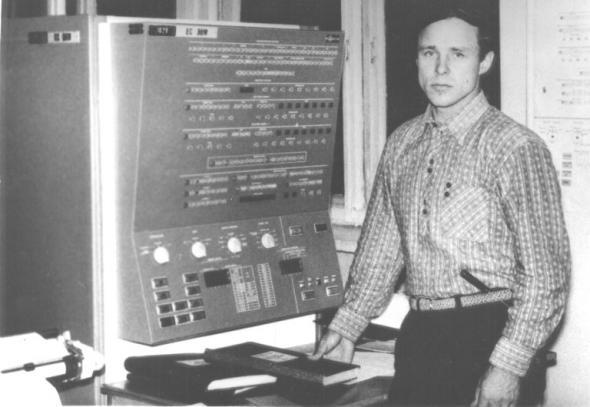
Source:

... The development of computer technology in the United States than in the former USSR. About domestic computer school in our time prefer to remain silent. Let's try to open up some of the facts that led to this.
Although nowadays computing operations is not the main, and in any case not only the scope of the computer, historically it owes its origin was the need of computing.
The first computing devices were different instruments, the most typical representative is an adding machine with the decimal system. The immediate predecessors computers were machines binary calculation made on the electromagnetic relay. Soon they were replaced by devices operating in the vacuum tubes, which meant the birth of the first generation of computers.

Appearance of the first computing device coincides with the phenomenal discoveries of scientists in the fields of energy, nuclear physics, rocketry, electronics. Research in these areas require extremely accurate, rapid and complex computations. Another reason for speeding up work in the field of information technologies - the ongoing process of post-war confrontation between the USSR and the USA. The first computers appeared in both countries almost simultaneously.
The official beginning of the era of computer technology is considered to be 1946, when the US military declassified legendary electronic computer called ENIAC. This is the first full-scale mainframe was built at the University of Pennsylvania. "Godfather" it was American physicists John Mouchli and John Eckert. First he developed the architecture of the computer, and the second transformation of ideas into reality. The works were started in 1942 and the spring of 1945 a computer was built.

The founders of the Soviet computer technology was Sergei Lebedev, and Isaac Brook. These scientists, working in the energy field, would somehow automate the tedious computational process. As a result, each of them suggested independent direction of computing. In 1939, Brooke created in the laboratory of the Energy Institute of the USSR mechanical integrator for solving differential equations, and Lebedev created in 1945 electronic analog computer designed to solve these same problems.
It should be noted that in 1948 the Soviet Union formed three schools of the development of computer technology:
Sergei Lebedev, who became an ideologue of computers with high speed;
Isaac Brook, engaged in the development of small and control computers;
Boris Rameeva that before the end of the 60s led the direction associated with the development of the mainframe.
The beginning of the history of Soviet computer technology is considered to be 1948. It was in this year under the leadership of Brook and his colleagues drafted Rameeva automatic digital computer with a hard program management. However, this project was not implemented. In the same year, Lebedev started at the Institute of Electrical Engineering of the USSR Academy of Sciences of the work on the creation of small electronic counting machine, which was successfully completed in two years.
In 1949 Rameev drafted a new computer "Strela" and was involved in its creation as a deputy chief designer Basilewski. "Arrow" was the first Soviet serial computers. After her Rameev as chief designer began to work actively on computer "Ural-1". Today, to see with their own eyes the first Soviet computers can be in the Polytechnic Museum in Moscow. Interesting exhibits are stored at the Institute of Cybernetics, Academy of Sciences of Ukraine named after VM Glushkov Kiev.

By the mid 60s the creation of a computer, in addition to the main scientific schools in Moscow and Penza, engaged in Minsk (series cars performance "Minsk") and Yerevan (mini-computers and the computers of average performance "Nairi" and "Hrazdan»).
Institute of Cybernetics, Academy of Sciences of Ukraine, headed by VM Glushkov, conducted theoretical studies in the field of computer design and embodied in the theory of real machines - small computer "Dnepr", minicomputers for engineering application "Promin" and "Peace".

Then it seemed that no special obstacles to the rapid development of the national school of computer and computing. But then came the fateful December 1967, when at the government level, it was decided to develop a single series of computers (UCS). But two years later, in the margins of the higher authorities have seen fit to develop the industry, relying on computer architecture and software-compatible family of IBM 360.
Academics Glushkov and Lebedev were against copying systems IBM, pointing out that in this case will be played appliances almost a decade ago will stall and own scientific development. But their voices were not heard, forever buried dream of scientists and enthusiasts to develop their own computer industry. As a result, data centers rather quickly were filled family computers UCS, ASVT, SM computers.

Victims of worship IBM has not been justified that confirmed the story. Thus, during the second half of the 80s in Minsk began production of the personal computer of the EU (EU-1840, the EU-45 and 55) on processors like Intel. However, again, the technology of production of microprocessors are not allowed to go beyond the level of Intel 286.
By 1990, the operation was about 15 thousand cars UCS. After the cessation of production of natural extinction began domestic computer park. Scattered service system stopped factories ...
Such are the sad little facts emerge when we turn to the history of the domestic personal computer.
author Igor Korneev

Source:
Tags
See also
Unfinished Moscow
Fatal error
Icons of the world of fashion
Nick Bostrom: We are almost certainly living in a computer simulation.
A small educational program for flight safety
The first Soviet ABM
Very beautiful Soviet actresses
Failure mission U2













